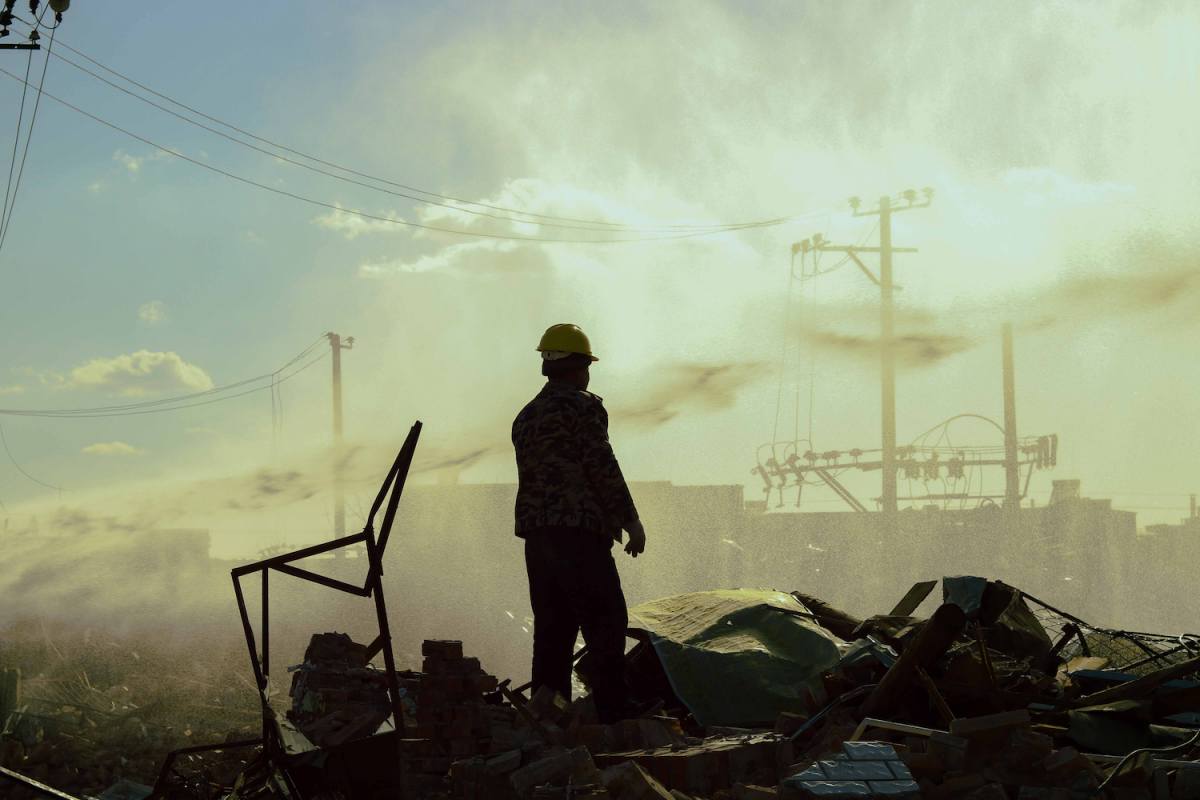On 21 October, a powerful gas explosion on a commercial street in Shenyang city, Liaoning province, killed five residents and injured 47. Over 15,000 households in the nearby area were affected by the explosion, which originated from a restaurant in a mixed-use complex.
The photos and videos from the scene reveal the severity of the explosion and the extent of the damage, with building skeletons blasted bare and rubble littering the street. In addition to the building at the site of the explosion, which houses commercial properties on the first three floors and residential units on floors four through seven, almost 100 nearby buildings were damaged, and a public bus carrying passengers can be seen blasted down to its frame.

Photograph: Jiahao Pan / Shutterstock.com
Residents in the vicinity reported that their windows shattered and their balconies were damaged. An eyewitness working in a restaurant thought the blast was an “earthquake,” and another resident described a “boom.” It was as cold as -2 degrees Centigrade in Shenyang, and about 1,500 residents were allocated to hotels after the blast.
The rescue effort lasted 36 hours and reportedly involved over 1,000 people and 300 vehicles. The specific cause of the explosion is under investigation, but a pipe modification project was underway. The project began in May 2021, with Shanyang Gas Company replacing over 200 kilometres of old gas pipes in the city, with a target end date in November. The night prior to the incident, the gas supply of the building at the site of the explosion was deliberately cut off for the project and resumed the morning of the incident to accommodate traffic needs during the daytime, according to a statement made by the company in response to public complaints about overnight noise.
After the incident, the Shenyang city government held an emergency meeting to deploy a work plan on the safety of city gas power. But this is not the first time such a meeting has been held. On 28 June of this year, the local authorities conducted a safety check of the gas lines, and on 31 July, another special meeting on gas safety was held by the Shenyang city government. These routine safety checks and meetings did not detect any safety hazards in the building at issue.
Nor is this the first time a large gas explosion has taken place in Shenyang. In 2012 and 2013 there were two gas explosions that took place in the same street in Shenyang, the first one injuring eight people and the second injuring over 20.
Explosions constitute a significant portion of workplace accidents in China. According to CLB data, compared to other types of accidents, explosions and fires usually involve far more casualties, cause more damage, and attract more scrutiny than smaller accidents. Almost 30 percent of explosions and about 20 percent of fires recorded on CLB’s Work Accident Map involve more than ten fatalities. For reference, the worst accident in China to date has been the Tianjin explosion on 12 August 2015 that killed 173 people.
Another major case occurred this June, when a gas pipeline explosion in Shiyan, an industrial city in Hubei, killed 26 and injured 138. The full investigation report was released in late September, and it was deemed as a “serious” work safety accident. The gas explosion took place at a community produce market in the early morning of 13 June 2021.
Inspections revealed that the Shiyan explosion was caused by a leak of the natural gas pipeline in the basement of the building. The disaster could have been prevented if the authorities had evacuated the market immediately upon receiving the report of the gas leak, about one hour before the explosion. The gas company was also blamed for failing to replace the long-rusted pipelines. Dozens of company managers and local officials were held accountable for this incident.
The lessons from Shiyan were not learned in time for the recent explosion in Shenyang. In addition, it has been two months now since the implementation of the revised Work Safety Law. Since then, two notable explosions have occurred: one on 22 October in a chemical factory in Inner Mongolia Autonomous Region that killed four and injured three; and a gas explosion on 24 October took place in a residential building in Dalian, Liaoning province, killing at least two residents.
Investigations, fines, and even criminal charges are not enough to solve the hazards and dangers of work. The current reactive model to work safety once again proves to be insufficient as it focuses on determining the cause after the incident and punishing those responsible, rather than understanding and preventing root causes that put workers’ and citizens’ lives at risk on a daily basis.
Instead, daily awareness about preventing safety problems and relying on frontline workers’ own inspections regarding each company’s safety measures would create strong and targeted preventative measures.
